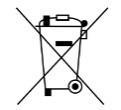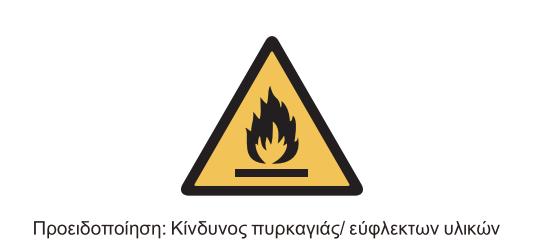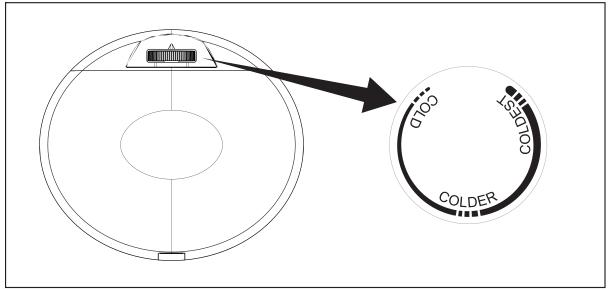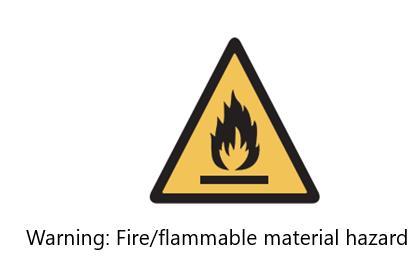IMPORTANT SAFETY INSTRUCTIONS
When using electrical appliances, these basic safety precautions should always be followed:
1. Read all the instructions.
2. Always switch power off before removing plug from wall outlet.
3. Remove plug by grasping the plug. Do not pull the cord.
4. To protect against electrical shock, do not immerse cord, plugs or motor assembly in water or other liquids.
5. Do not allow children to play with this appliance. Close supervision is necessary when this appliance is in use.
6. Unplug from power outlet when not in use and before cleaning.
7. Allow the appliance to cool before putting on or taking off parts.
8. Do not use if there are visible signs of damage to the appliance.
9. Do not use outdoors. This appliance is not designed for outdoor use.
10.Do not place the appliance on, or, near electrical equipment, hot gas flame or in a heated oven.
11.Do not use with an external timer.
12.Do not operate if the appliance has a damaged cable or plug.
13.Do not let the cord hang over the edge of a table or counter or to touch hot surfaces.
14.Always use on stable flat surface.
15.Extreme caution must be used when moving an appliance containing hot oil or other hot liquids.
16.Do not use appliance for purpose other than intended usage.
17.Do not move or lift the appliance while the power cord is still connected to the outlet.
18.Do not clean with metal scouring pads. Pieces may break off the pads and touch electrical parts creating risk of electrical shock.
19.No user service care. Parts to be returned to your supplier in case of fault or damage.
20.The appliance is not intended for use by persons (including children) with reduced physical, sensory or mental capabilities, or lack of experience and knowledge, unless they are supervised or instructed concerning use of the appliance by a person responsible for their safety.
21.This appliance can be used by children aged from 8 years and above and persons with reduced physical, sensory or mental capabilities or lack of experience and knowledge if they have been given supervision or instruction concerning use of the appliance in a safe way and understand the hazards involved.
22.Cleaning and user maintenance shall not be made by children without supervision.
23.This appliance is intended to be used in household and similar applications such as: staff kitchen areas in shops, offices and other working environments, farmhouses, by clients in hotels, motels and other residential type environments, bed and breakfast type environments.
24.Children of less than 3 years should be kept away unless continuously supervised.
25.Children aged from 3 years and less than 8 years shall only switch on/off the appliance if it has been placed or installed in its intended normal operating position and they have been given supervision or instruction concerning use of the appliance in a safe way and understand the hazards involved. Children aged from 3 years and less than 8 years shall not plug in, regulate and clean the appliance or perform user maintenance.
WARNING!
This appliance is intended to be used in household and similar applications, such as kitchen staff areas in shops, offices and other working environments, farmhouses and by clients in hotels, motels and other residential type environments, bed and breakfast type environments, catering establishments and similar environments.
If the supply cord is damaged, it must be replaced by the manufacturer, its service agent or a similarly qualified person to avoid a hazard.
Do not store explosive substances such as aerosol cans with flammable propellant inside the appliance. The appliance must be disconnected from the mains after use and before any user maintenance is carried out on the appliance.
WARNING: Keep the air vents open, in the appliance casing or in the built-in structure, without obstruction.
WARNING: Do not use mechanical devices or other means to accelerate the defrosting process, except those recommended by the manufacturer.
WARNING: Do not damage the refrigerator circuit.
WARNING: Do not use electrical appliances inside the food storage compartments of the appliance, unless they are of the type recommended by the manufacturer.
WARNING: Do not damage the refrigerator circuit.
WARNING: Do not use electrical appliances inside the food storage compartments of the appliance, unless they are of the type recommended by the manufacturer.
WARNING: Please dispose of the refrigerator in accordance with local regulations, as it uses flammable gas and refrigerant.
WARNING: When positioning the appliance, ensure that the power cord is not trapped or damaged.
WARNING: Do not place multiple portable sockets or portable power sources on the back of the appliance. Do not use extension cords or non-grounded (two-prong) adapters.
DANGER: Child entrapment hazard. Before disposing of your old refrigerator or freezer:
• Remove the doors
• Leave the shelves in place so that children cannot easily climb inside.
The refrigerator must be disconnected from the power source before attempting to install any accessories.
The refrigerant and cyclopentane used as foaming agents in the refrigerator are flammable. Therefore, when the refrigerator is discarded, it must be kept away from any source of fire and recycled by a special recycling company with the corresponding certification and not disposed of by incineration, to avoid environmental damage or any other harm.
For EN standard: This appliance can be used by children aged 8 years and above and people with reduced physical, sensory or mental capabilities or lack of experience and knowledge if they have been given supervision or instruction concerning use of the appliance in a safe way and understand the hazards involved. Children aged from 3 to 8 years are allowed to load and unload refrigeration appliances.
For IEC standard: This appliance is not intended for use by people (including children) with reduced physical, sensory or mental capabilities or lack of experience and knowledge unless they have been given supervision or instruction concerning use of the appliance by a person responsible for their safety.
Children must be supervised to ensure that they do not play with the appliance.
To avoid food contamination, please follow the instructions below:
• Opening the door for long periods of time can cause a significant increase in the temperature inside the refrigerator.
• Clean surfaces that come into contact with food and accessible drainage systems regularly.
• Clean the water tanks if they have not been used for 48 hours. Flush the water system connected to the water supply if it has not been used for 5 days.
• Store raw meat and fish in suitable containers in the refrigerator so that it does not come into contact with or drip onto other foods.
• Two-star frozen food storage compartments are suitable for storing pre-frozen food, storing or making ice.
• One , two- and three-star storage compartments are not suitable for freezing fresh food.
• If the refrigerator remains empty for long periods of time, turn it off, defrost, clean, dry and leave the door open to prevent mold from growing in the appliance.
Introduction
Please read these instructions carefully before installing or using your appliance. It is recommended that you keep your proof of purchase and installation together with these instructions in a safe place for future reference. They contain important safety information, as well as instructions and recommendations that will allow you to take full advantage of all the features offered.
This high-quality appliance has been tested and certified to meet all applicable European electrical and safety standards.
This appliance must be installed and connected in accordance with applicable regulations by a qualified electrician.
After unpacking the appliance, check that there is no visible damage. If the appliance has been damaged during transport, do not use it and contact your dealer immediately.
Device description
Important Note:
1. Refrigerator Chamber 2. Thermostat control (interior light)
3. Internal glass shelf
5. Freezer drawer
7. Door storage (top)
9. Door storage (bottom)
4. Salad crisper box with glass shelf
6. Leveling Feet
8. Door storage compartment (middle)
10. Freezer compartment
1. The appearance and specifications of the product may vary without notice to improve product quality.
2. The appearance and specifications of the product may vary with those of the relevant energy efficiency test or relevant safety test, etc.
Section 1. Installation
• IMPORTANT! This appliance must be left to stand in an upright position for at least 4 hours before first use.
• This appliance is designed for domestic use only. Remove all packaging and fixing tape from the appliance.
• Wash the inside of the appliance with lukewarm water containing a small amount of sodium bicarbonate of soda (5ml in 0.5 liters of water).
• Place the appliance in a dry environment and away from direct sunlight.
• Do not place it next to stoves or other heat sources, such as radiators.
• This appliance must not be placed in a cold environment, such as a garage or attic. Placing it there may lead to freezing of the freezer unit.
• If placed next to another refrigerator or freezer, leave a minimum gap of 2cm between the appliances to avoid moisture build-up.
• You must leave a 50mm gap above the appliance. If this is not possible, ensure that you maintain a 25mm gap on each side of the appliance.
• Place the plastic spacers/wall spacers on the condenser at the back of the appliance, this will ensure a ventilated space between the appliance and the wall.
• Do not place or store heavy objects on top of this appliance. Ensure that the appliance is placed on a solid, flat surface.
• This appliance must be level. Adjust the level by turning the adjustable feet up or down (using your fingers or a suitable wrench).
• Ensure that the appliance is in a vertical position and that both feet are in close contact with the floor so that the refrigerator is stable.
• Connect the plug to a nearby socket that complies with the specifications in your area and ensure that the appliance is not standing on the power cord.
Section 2. Safety Tips
• Read this booklet carefully before installing and operating the appliance. The manufacturer accepts no responsibility for incorrect installation and use.
• If this appliance is to replace an old refrigerator with a lock, as a safety measure break or remove the lock and/or door before disposal.
• Your old appliances contain insulating gases and refrigerants which must be disposed of properly. Make sure that the refrigerant circuit is not damaged before removing the appliance for proper disposal in accordance with current legislation. If in doubt, contact your Local Authority for instructions.
• This appliance may contain the refrigerant isobutane <R600a/R134al. It is a natural gas with a high level of environmental compatibility. However, care must be taken as isobutane is a flammable gas. It is essential to ensure that the refrigerant pipes are not damaged during transport and installation of the appliance. If the refrigerant circuit is damaged, avoid naked flames or sources of ignition and ventilate the room in which the appliance is located.
• If an adapter is used, it must be used in accordance with the manufacturer's instructions and ensure that the electrical circuit is not overloaded as this may cause overheating.
• Do not twist or bend the cables and keep them away from hot surfaces. Do not connect or disconnect this appliance with wet hands.
• After installation, ensure that the power cord is not trapped under the appliance.
• Ensure that the appliance has been in an upright position for at least 4 hours before switching it on.
• The appliance must be unplugged from the mains after use and before any maintenance on the appliance by the user.
Section 3. Operating the appliance
3.1 Switching on the appliance
• Allow the appliance to stand for at least 4 hours before switching it on
• Connect the appliance and switch it on from the mains
• Adjust the thermostat control to the required setting as described in the Temperature Control section (3.2)
• Leave the appliance for approximately 4 hours to reach the correct temperature
3.2 Temperature control
Winter: Set the temperature control knob to “COLDER” or “COLD”, energy saving.
Summer: Set the temperature control knob to “COLDER” or “COLDEST”, to ensure the cooling effect.
Spring and autumn: Set the temperature control knob to “COLDER”.
Reminder: If the refrigeration compartment has ice during use, it indicates that the temperature setting is too low, and it is recommended to adjust the knob slightly in the “COLD” direction.
3.3 Storing & Freezing Food in the Freezer
This appliance has a three-star freezer that is suitable for long-term storage of frozen food. It can also be used for freezing and storing fresh food.
3.4 Normal operating sounds
You may hear a steaming or bubbling sound as the refrigerant is pumped into the cooling system and through the coils or pipes at the back of the appliance. When the compressor is operating, you may hear a slight humming or pulsating noise. The thermostat controls the operation of the compressor, and you may hear a slight clicking sound as it operates.
3.5
• Do not install the appliance near heat sources such as an oven, dishwasher or radiator.
• Place the appliance in a cool and well-ventilated room and make sure that the air vents are open.
• Try to avoid keeping the doors open for a long time, warm air will enter the cabinet and can cause frost build-up as well as affect energy consumption. Make sure that there is nothing preventing the doors from closing properly.
• Make sure that the door seals are clean and that there are no tears or splits.
• Keep the most delicate foods, those with a short shelf life, such as cooked meats, in the coldest part of the refrigerator. The Salad Crisper Box is the warmest part of your refrigerator and should be used for vegetables, salads and fruit, etc.
• Do not overload the refrigerator: the cooling air that circulates to keep the refrigerator cold is blocked and pockets of warm air form.
• Do not put hot food in the refrigerator or freezer, let it cool down first.
3.6 In the event of a power failure
If there is a power failure, keep the doors closed. When the power is restored, the appliance will start working, but it may take some time to reach the preset operating temperature.
Section 4. Maintenance
Before carrying out any maintenance or cleaning work, DISCONNECT the appliance from the power supply.
4.1 Internal cleaning
Clean the interior and accessories with warm water and bicarbonate of soda <5ml to 0.5 liters of water. Rinse and dry thoroughly. Do not use detergents, abrasive powders, strongly scented cleaning products, wax polishes or cleaning products containing bleach or alcohol.
4.2 External cleaning
Wash the outer cabinet with warm soapy water. DO NOT use abrasive products. There may be sharp edges on the underside of the product, so care should be taken when cleaning. Once or twice a year, dust the back of the appliance and the compressor at the back of the appliance, with a brush or vacuum cleaner, as dust accumulation will affect the performance of the appliance and cause increased energy consumption.
4.3 Defrosting
The refrigerator compartment will not defrost automatically. However, you will need to defrost the freezer periodically. When the frost in the freezer exceeds 3-5mm, empty the contents and switch off the appliance, leave the door open and let the frost melt. Place the frozen food in an insulated bag or wrap it in a thick layer of newspaper. Do not use sharp objects to scrape the frost. Clean and dry the interior, close the door and switch on the appliance. When the power is restored, the appliance will start to operate, but it may take some time to reach the preset operating temperature.
4.4 When the appliance is not in use
When the appliance is not in use for long periods of time, remove the contents, unplug it from the power supply and clean the appliance, leaving the door ajar until you want to use the appliance again.
4.5 Changing the interior light (except for the freezer compartment)
Turn off the power to the appliance. Remove the plastic light cover. Remove the bulb from the light unit. Replace the bulb with the appropriate one. Reinstall the cover and switch the appliance back on.
4.6 What to do if something goes wrong
• There is no power to the appliance:
Check that there is no power cut
Check that there is power to the electrical socket/appliance
Check the fuse in the plug
Check that the thermostat is set to position 1 or see section 3.2
• The compressor runs continuously:
Check that the doors are properly closed
Check whether large quantities of food have recently been added to the appliance. If so, allow the internal temperature to return
If the refrigerator doors are opened frequently, you should leave them closed for a while so that the internal temperature can return
Check that the thermostat is not set to maximum
• There is excessive ice build-up:
Make sure that the doors are properly closed
Make sure that the door seals are clean and that they seal properly
Make sure that the thermostat control is not set to maximum
• The device is making noise:
Refer to Normal Operating Sounds, section 3.4
Make sure the device is installed correctly (See section 1)
If after the above checks the error still exists, contact your retailer.
INSURANCE
Any warranty provided with this product does not cover loss of contents of fridge/freezer.
Any insurance does not apply to loss, damage, expenses of an indirect or consequential nature, including any financial loss or damage to food or other goods. We recommend that you regularly check your fridge/freezer to check that it is working properly, losses may arise from wear and tear following a fault or accidental failure of the appliance, fuses, sockets or the public power supply. These may be covered by your standard home insurance but may require additional cover. Check with your insurance provider.

This symbol on the product or on the container indicates that this product cannot be eliminated with the general waste. The user is responsible for eliminating this kind of waste by throwing them away at a “recycling point” specifically for electrical and electronic waste. Selective collection and electrical equipment recycling contribute to preserve natural resources and warrant waste recycling to protect environment and health. To receive further information about electrical and electronic waste collecting and recycling, contact your Local Council, the service of household waste or the establishment where the product was acquired.
Remark: Do not use this appliance with a programmer, timer, separate remote-control system or any other device, that switches the appliance on automatically, since a fire risk exists if the heater is covered or positioned incorrectly. This appliance is not intended for use by persons (including children) with reduced physical, sensory or mental capabilities, or lack of experience and knowledge, unless they have been given supervision or instruction concerning use of the appliance by a person responsible for their safety; Children should be supervised to ensure that they do not play with the appliance.










